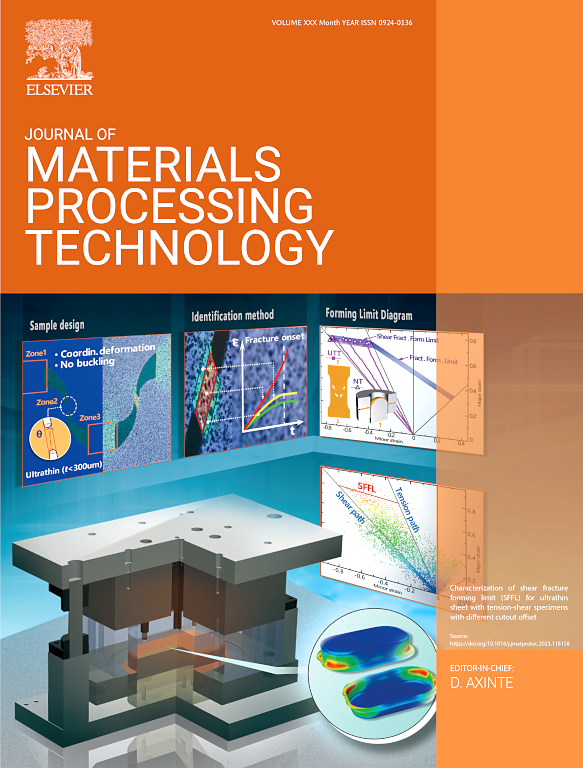Texture-related strength-ductility trade-off in Mg alloys: New insights from an accurate and efficient semi-analytical relaxed constraint model
IF 6.7
2区 材料科学
Q1 ENGINEERING, INDUSTRIAL
Journal of Materials Processing Technology
Pub Date : 2025-02-03
DOI:10.1016/j.jmatprotec.2025.118755
引用次数: 0
Abstract
A novel semi-analytical model combining relaxed constraint theory and the Sachs hypothesis was proposed to describe the plastic deformation of magnesium (Mg) alloys. The model stands out by its ability to efficiently and accurately calculate the strength-ductility of Mg alloys influenced by texture using a constitutive equation. The proposed model effectively captures the changes in tensile flow curves during the weakening process from strong basal to fiber texture. It explains how divergence weakening promotes twinning and inhibits slip, leading to reduced yield strength and increased uniform elongation. The strength-ductility relationship for the two main texture adjustment methods, divergence and deviation, is shown to vary with adjustment angles. The model emphasizes that non-basal slip dominance during early deformation significantly enhances strength, while twinning contributes the least. Conversely, basal slip dominance is optimal for improving ductility, whereas non-basal slip proves the least effective. By adjusting model parameters, the impact of alloying on strength-ductility trade-off is evaluated, revealing that reducing the activation differences in deformation mechanisms can improve the overall material performance. These findings provide valuable insights for optimizing process design to achieve a balanced strength and ductility in Mg alloys.
求助全文
约1分钟内获得全文
求助全文
来源期刊

Journal of Materials Processing Technology
工程技术-材料科学:综合
CiteScore
12.60
自引率
4.80%
发文量
403
审稿时长
29 days
期刊介绍:
The Journal of Materials Processing Technology covers the processing techniques used in manufacturing components from metals and other materials. The journal aims to publish full research papers of original, significant and rigorous work and so to contribute to increased production efficiency and improved component performance.
Areas of interest to the journal include:
• Casting, forming and machining
• Additive processing and joining technologies
• The evolution of material properties under the specific conditions met in manufacturing processes
• Surface engineering when it relates specifically to a manufacturing process
• Design and behavior of equipment and tools.
 求助内容:
求助内容: 应助结果提醒方式:
应助结果提醒方式:


